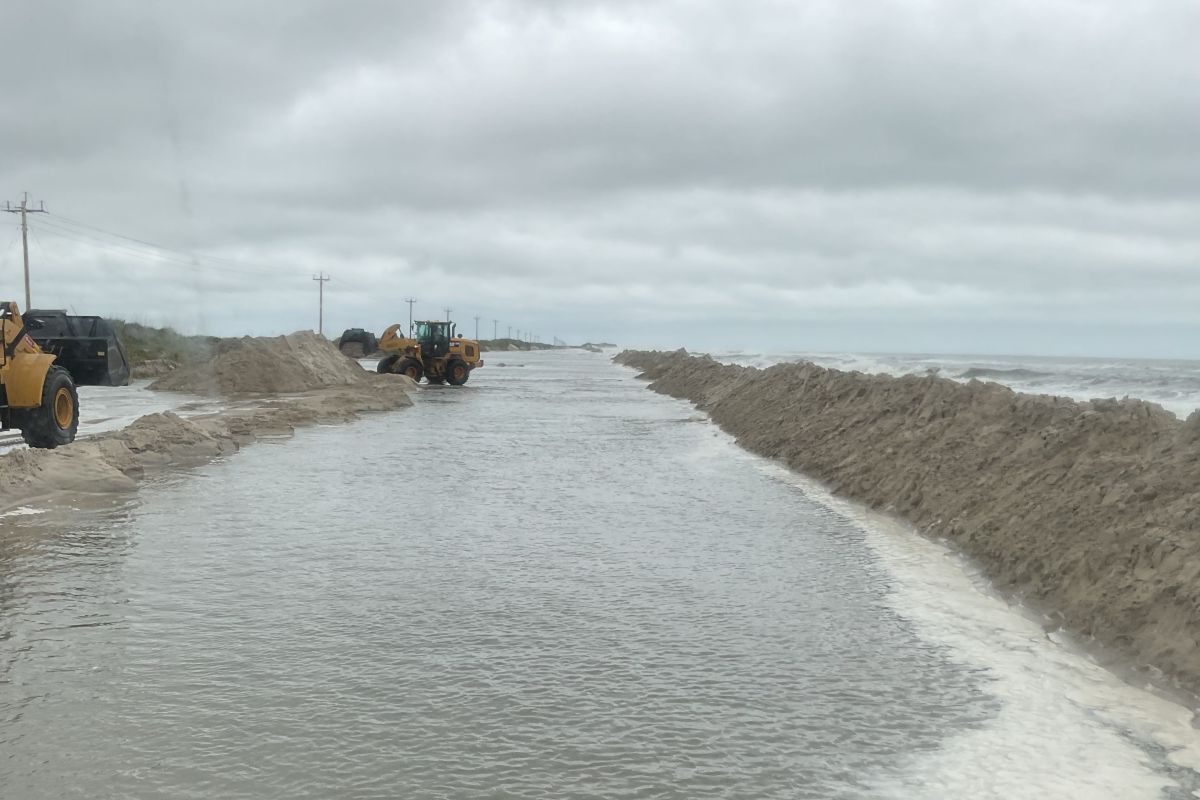
NORTH TOPSAIL BEACH – A portion of North Topsail Beach is being removed from a longstanding designation that exempts property owners from receiving federal aid.
H.R. 5787, The Strengthening Coastal Communities Act of 2018, recently signed by President Donald Trump, amends the Coastal Barrier Resources Act, or CBRA, to create more accurate digital maps of units of the John H. Chafee Coastal Barrier Resources System, or CBRS.
Supporter Spotlight
The new law means minor changes for North Topsail Beach, a town where roughly 70 percent is within a CBRA, pronounced “cobra,” boundary and has spent years trying to get changed. Digital maps will also include modifications to the Pine Island Bay Unit north of Duck in Currituck and Dare counties, the Roosevelt Natural Area Unit in Pine Knoll Shores in Carteret County, and the Hammocks Beach Unit in the Onslow Beach Complex in Onslow County.
Nearly 80 structures, including the Topsail Reef condominiums, within a half-mile stretch of the North Topsail Beach will be removed from the designation, according to the town’s Mayor Dan Tuman.
That will still leave more than half of the town’s beach – 6 miles of 11.1 miles – within a CBRA boundary where it does not qualify for federal storm risk reduction and recovery spending.
There are about 2,600 residential structures in the town and roughly 60 percent of them are inside the CBRA boundary, Tuman said.
Supporter Spotlight
Anyone who owns property within the CBRA unit cannot participate in the National Flood Insurance Program, or NFIP, or apply for a Veterans Affairs loan.
Congress created CBRA in 1982 to discourage building on relatively undeveloped barrier islands by cutting off federal funding and financial assistance in hurricane-prone, biologically rich areas.
The National Audubon Society has praised the new law’s revisions, which will include an additional 17,000 acres of coastal area.
Audubon President and CEO David Yarnold said in a statement following the passage of H.R. 5787 that the revisions and updates to CBRA are “good news for both people and birds who live along the coasts because between rising seas and suturing hurricanes, the best answer right now is not concrete walls and sandbags, it’s naturally resilient coasts.”
“Since it was signed into law by President Reagan in 1982, the Coastal Barrier Resources Act has kept more than 3 million acres of flood- and storm-prone shoreline natural, buffering nearby communities and shielding taxpayers from the costs of recovery and redevelopment,” Yarnold said.
The U.S. Fish and Wildlife Service, which is responsible for designating and mapping CBRA units, determined at the time that since the unincorporated north end of Topsail Island was largely undeveloped, the land met the criteria to be placed within CBRA.
The agency designated more than 6,000 acres as CBRA lands.
North Topsail Beach officials have steadfastly argued the town’s CBRA boundaries are erroneous because land in the zone was already under development and had a full complement of infrastructure, including roads, water, sewer and power before CBRA was enacted and prior to the town incorporating in 1990.
The causeway linking the mainland to the north end of Topsail Island was also built prior to CBRA.

“The area of the north end of the island was developed by their standards, but it was included,” Tuman said. “All of North Topsail Beach, for the criteria of the original intent of CBRA, should not have been included.”
Properties along the Intracoastal Waterway that are inside the town limits, but do not have direct access to utility services, such as water and electricity, would not qualify to be removed from CBRA, he said.
Town officials persist in their argument that residences and businesses that are adjacent to infrastructure should be removed from the designation.
The late Marlow Bostic, the man responsible for much of the town’s original development, filed a federal lawsuit to block the CBRA inclusion. A district court judge denied the request by Bostic and a handful of North Topsail property owners for a temporary restraining order and preliminary injunction, ruling that the CBRA designation was justified. The court of appeals upheld the court’s ruling and dismissed the case.
The town has increasingly gained support in recent years from congressional lawmakers, including U.S. Sen. Thom Tillis, R-N.C. and U.S. Rep. Walter B. Jones, R-N.C.
In August 2017, Tillis introduced S. 1745, which would revise the boundaries to remove all of the structures in North Topsail Beach currently within the CBRA. The bill, co-sponsored by U.S. Sen. Richard Burr, R-N.C., was referred to the Committee on Environment and Public Works. There has since been no movement on the bill.
Tillis said in a statement that he supports the Strengthening Coastal Communities Act and indicated he would continue to push getting more of the town out of the CBRA boundary.

“While this legislation doesn’t fully resolve the error created when the maps were originally drawn, it is a significant improvement, and I remain committed to making sure that we fully resolve the original mapping error,” Tillis said in a press statement.
Tillis’ press secretary Adam Webb stated in an email that the senator is “committed to working on fully resolving the issues” at North Topsail Beach.
“We are currently working with relevant stakeholders to evaluate our options to fully correct the outstanding CBRA map issues,” Webb said in the email.
Jones, as well as former U.S. Sen. Kay Hagan, a Democrat, have also introduced bills to revise the CBRA designation in North Topsail Beach.
In December 2017, Jones submitted H.R. 4692. The bill was referred in January 2018 to the House subcommittee on Water, Power and Oceans.
Tuman said the town is depending on Tillis and Jones to persist in getting the various committees to review the bills.







